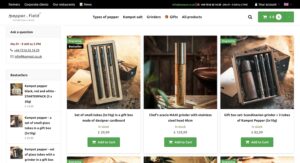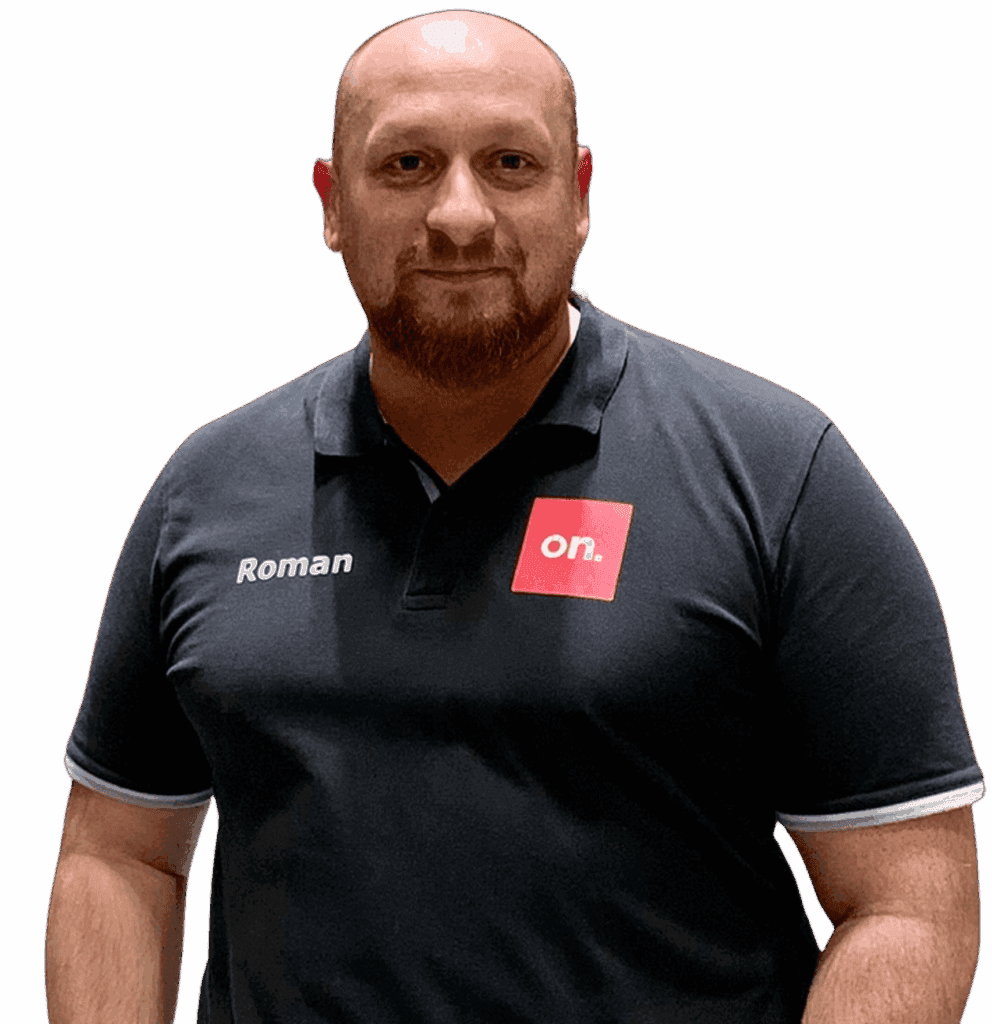What is the average order value and how to increase it?


One way to effectively manage the growth of your business is to work with average order value. Even simple, seemingly minor changes in the business model can affect the average order value. For example, from a logistics perspective, it is affected by the accuracy in order fulfillment, delivery speed, user-friendliness in returns management, quality of customer service, etc.
Working with the average order value will also help you predict revenue in different periods of the year, from which you can adjust the ideal timing of your investments, for example in warehouse equipment, advertising, software, etc.
What is the average order value, how to increase it and why is it important to work with it…? We bring you all this in our blog article.
What is the average order value?
The average order value (AOV) is the amount in money that a customers spend on average during their purchase.
A related metric for analyzing financial revenue is the return on ad spend (ROAS), which in marketing indicates how much revenue is generated for every coin invested in online advertising.
However, if your online store records a higher number of purchasing customers (with an imaginary threshold of 1,000 per month), it is necessary to gradually shift focus from ROAS to optimizing tools that increase the average order value (AOV).
How to calculate the average order value?
The average order value (AOV) is calculated by dividing the total sales by the number of orders for the selected period, i.e. by the formula:
AOV = revenue / number of orders
Example 1: In April this year, your online store recorded a total of 3,000 orders and your revenue was 48,168 EUR.
AOV = 48,168 EUR / 3,000 orders = 16,056 EUR
The average order value in this case is 16,056 EUR.
Example 2: You can use AOV to plan for increasing sales. For example, if the AOV increases by 2.01 EUR, the total revenue of the business will increase by 6,021 EUR in the model case.
The impact of average order value on business decisions
An increase in AOV does not only affect the amount of sales, but also the overall company cash flow – for example, the amount of advertising budget, sales strategy optimization, conversion rate, etc. However, it is always true that the basic condition for increasing your AOV is understanding your own customers.
1. Buying habits and trends
Long-term monitoring of AOV in practice informs which seasons or which marketing campaigns bring the most profit to the business.
Example: At the turn of autumn/winter, the number of orders from companies selling functional sportswear increases significantly. That’s why it’s important to have creative marketing campaigns for discounted packs that appeal to both new and existing customers.
It is not always possible to increase the AOV significantly on the first attempt. See the result as a basis for further analysis of your target customer and future campaign optimization. Reasons for “failure” can be for example:
- offering an inappropriate combination of goods in the package;
- inappropriate campaign format;
- wrong period of the year;
- absence of desired products in your portfolio, etc.
2. Conversion costs
We also recommend comparing the average order value (AOV) with the CPA (cost per action) or CAC (total customer acquisition cost). A low AOV and high CPA/CAC represents a significant reduction in final profit. For example, if you’re paying € 2.01 to acquire a new customer and your AOV is the same or lower, you’re in the red numbers.
A profitable average order value (AOV) should be at least 2x the cost per action (CPA) or customer acquisition cost (CAC).
TIP: Is a long-term profitable subscription option part of your business model? Are you retaining your customers with a sufficiently broad product portfolio? If so, you’re increasing your customer lifetime value (CLV), the total revenue a customer earns over the lifetime of their relationship with your e-commerce store.
If you work with this metric as well, you can predict the rate of repeat customers generating recurring revenue. In other words, at this point you can afford a lower AOV and higher CAC than brands that don’t take advantage of this opportunity.
Example: If you sell a subscription on a monthly basis worth EUR 8.03 and regular customers buy it on average 15 times in a row, the CLV of these customers is EUR 120.45. At this point, you can spend more than 8.03 EUR to acquire a similar number of new customers, because you are sure to make another 120.45 EUR on the new customer, for the entire time they shop on your online store.
3. Other related costs
What else do you need to pay to ensure that your customer receives their order on time and to the required quality? In other words, how to ensure a positive customer experience? Here again, you need to consider the following items in your search for a sufficient AOV:
- product development and production costs;
- cost of updating the website;
- costs for storage and logistics operations;
- transport costs;
- costs for improving customer care, etc.
4. Pricing strategy
Every time you make a change in your pricing, you affect the AOV. If your AOV increases after a price change and your ROI remains the same or even decreases over time, you’re on the right track.
Are you working with the public perception of your brand? Are you perceived more as a luxury or discount retailer? For further strategic direction, you need to identify the current state and follow up with specific tactics to move away from the grey middle. For example, introduce options for quantity discounts, sending complementary products for free, setting a minimum order price rule, etc. Price increases are not always a barrier and a reason to reduce conversion rates.
TIP: For example, would an increase in the subscription price from 8.03 EUR to 9.23 EUR mean a significant drop in conversions? The 1.2 EUR that the monthly subscription price would increase by would mean 18 EUR per regular customer for 15 purchases per year, which could partially/fully cover the acquisition costs.
Tips for increasing the average order value
It is clear from the above mentioned that the level of AOV significantly affects financial performance. It is therefore appropriate to ask the question: “How do I convince my customers to spend more and repeatedly on my online store?”
We provide a number of tactics for increasing AOV, however, a number of variables define their applicability and success for a particular brand.
1. Create gift packaging
A practical and complementary combination of products in a discounted package can make a suitable purchase or gift in the eyes of the customer. And as you can guess… buying more products increases your AOV. As an example, Pepperfield actively offers a range of premium gift packaging on their online store.
If you go down the same path, define products that complement each other and could appeal to existing/new customers in a joint package. Your fulfillment service provider can also help you with product selection and packaging.
2. Define the threshold for free shipping
“Orders over EUR 60 are delivered free of charge.” At first glance, a detail that can significantly increase the AOV. It’s no secret that free shipping is one of the most effective shopping cart marketing tools. As many as 73% of customers confirm that free shipping is the most important factor for them when paying, as they view the cost of shipping as an unnecessary extra cost in today’s competitive environment.
Go even further and communicate this benefit in terms of, “How much more does a customer have to spend to avoid missing out on free shipping?” This way, you can further motivate your customers who are not yet 100% convinced of the final form of their purchase and increase their AOV. Plus, if you inform the customer to spend an extra EUR 2 for free shipping, they are likely to spend even more.
TIP: For example, offer the option to purchase 2 complementary products whose total value exceeds your free shipping threshold. Communicate this benefit throughout the shopping process, for example via a banner, to ensure the customer is aware that they have achieved this benefit. You will achieve further positive relationship building with your brand.
3. Practice cross-selling
Cross-selling is an easy way to increase the price of goods in your shopping cart by the price of additional goods. Offer the cross-selling option not only in the shopping cart itself, but at the moment of selecting the item in the shopping cart. The advantage is that the add-ons are displayed exactly when the customer has decided to buy a particular product and therefore has the product selection fresh in his mind.
Do an internal analysis of the most frequently purchased product combinations, or ask your target audience about combinations. Then brainstorm effective ideas.
Example: When inserting the shoes into the shopping cart, the customer will see a non-invasive popup window with the option to purchase medical pads, stylish laces, or other accessories that are closely related to the selected product.
Offer your customers the right accessories and teach them to think more strategically about their purchases.
4. Reward loyal customers
A loyalty program is another of the many ways to increase your own AOV. Functioning loyalty programs encourage repeated purchases, ideally of higher margin items. Reward your customers when they reach a threshold, either the total value of all purchases or the number of purchases.
Immediately giving discounts to every visitor to your online store has a negative impact on AOV. Therefore, it is advisable to tailor the discount offer to the customer’s behaviour. Offer discounts only at the moment of cart abandonment or for the next purchase after the first purchase. This will encourage customer loyalty to your brand.
5. Offer “limited edition” products
This method, in addition to increasing AOV, also helps the shift to a more luxury brand. That is, selling not only the product itself, but also the associated added value.
Don’t you have limited products in your portfolio? One way to do this is by partnering with another relevant brand. By temporarily or partially teaming up with another vendor, you are able to reach a larger audience – in addition to your own and your partner’s.
Cooperation with fulfillment partner for increasing AOV
Working with a fulfillment partner can significantly impact your average order value – either positively or negatively. As such, logistics is an integral part of any business and its quality is a differentiating factor in today’s highly competitive environment, both for the success of retailers and for the purchasing decisions of end customers.
Level of customer experience
Speed, accuracy, transparency. Their quality defines logistics competitiveness and largely influences the customer’s relationship with your company or your AOV. The experienced standard of next-day delivery (D+1 mode) in the Czech Republic is difficult to meet, especially during peak sales seasons (e.g. Christmas). You are faced with the questions:
- Am I able to compete with the big e-commerce players?
- At what rate am I able to process my orders on time and in the required content?
- Do I have stock levels appropriate for the upcoming season?
A technology-based fulfillment service provider has the answers to all these questions. A partner that can help you maintain or increase your customer satisfaction and retention.
Increased margins and lower threshold for free shipping
Conversion of fixed costs into variable ones. This is the status you achieve when working with a fulfillment provider. Pay monthly only for the warehouse space and logistics operations you need. Pay less for shipments – your fulfillment partner achieves lower carrier rates by aggregating all of its clients’ shipments. Don’t pay unnecessarily for staff or excess warehouse space at less busy times of the year.
With these and other savings, you’ll achieve higher business profits that you can invest in your continued growth or offer your customers a lower threshold for free shipping. A threshold that convinces them to make a purchase.
Efficient management of own stock
Fulfillment service providers have often already invested in the appropriate IT equipment and software. Software that can provide with an access once you start working together. In our company, we use a cloud-based warehouse management system (WMS) for efficient inventory management, which offers our clients, via the MySkladon client application, a complete logistics overview and reports – in real time, online and 24/7.

Looking for a way to analyze your AOV, sales trends and marketing campaign success over the long term? Need to determine which products to offer in combination? Whether for cross-selling purposes or for putting together gift packages?
Get in touch with us and we’ll be happy to show you our solutions with practical examples.
WATCH COMPANY TOUR VIDEO
Conclusion
In order to build a profitable business model for long-term business growth, it is important to work strategically and increase the average order value.
Achieving a higher difference between average order value (AOV) and total cost per action (CPA) will give you more funds to reinvest in further acquisition, branding activities or customer retention.


